Media Buying Proposal Template
Optimize your clients' advertising campaigns with our Agency Media Buying Proposal Template – deliver a data-backed plan to maximize media placements and budget efficiency.
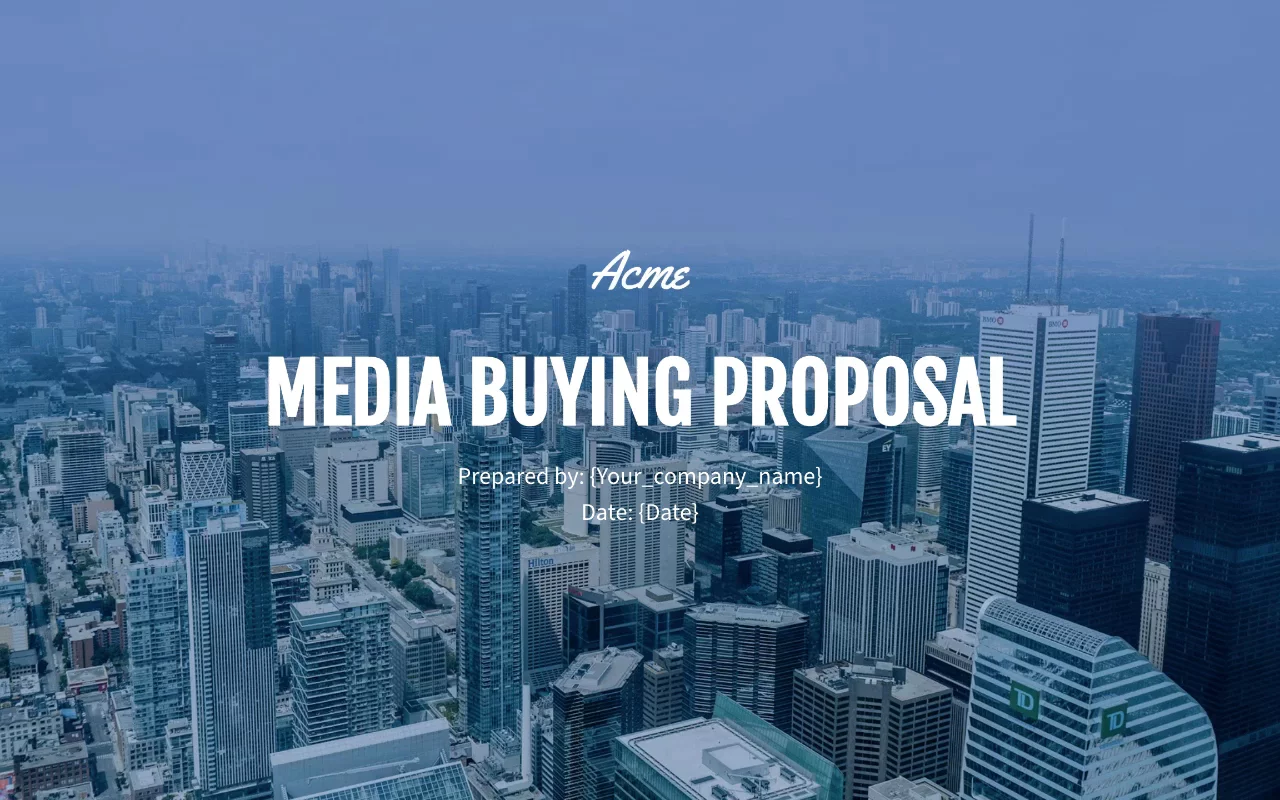
About this template
Win over potential clients and navigate through complex media purchase cycles with our user-friendly Media Buying Proposal Template. It guarantees a seamless buying experience, assisting your representatives in closing challenging contracts and growing your client base.
What's included?
- Introduction
- Your priorities
- What success looks like
- 12-month goals
- Performance & optimization
- Budget allocation
- Timeline & milestones
- Service details
- About us
- Investment
- Contact us
Included in our template
Client priorities
Effective media buying starts with understanding the client’s unique goals. This is where you can highlight what you’ve learned from discovery conversations—whether that’s expanding brand reach, improving ad efficiency, increasing conversions, or scaling campaigns across multiple channels.
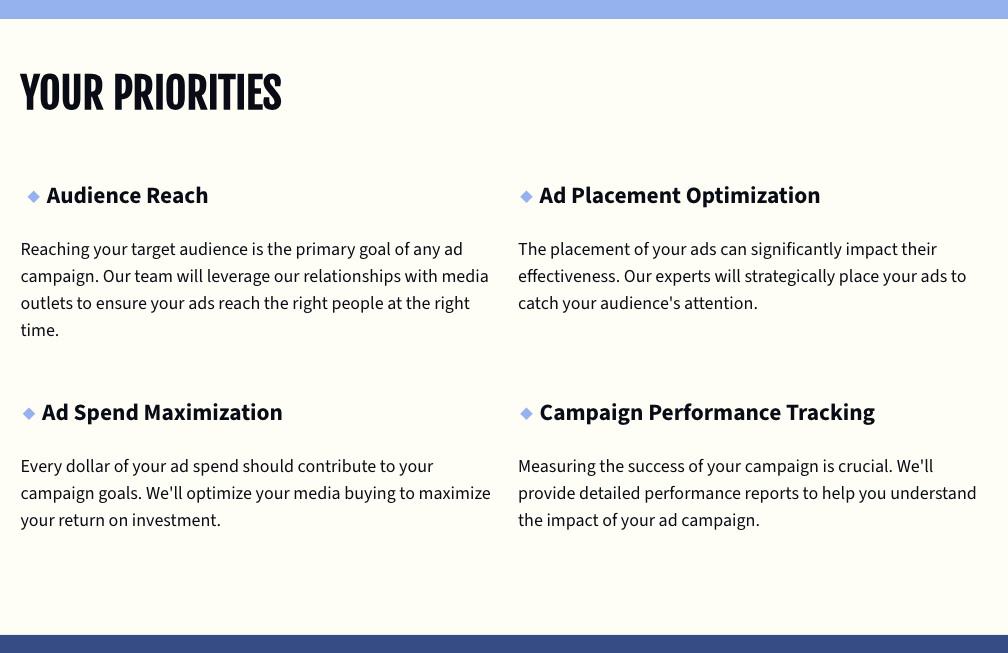
Timeline and milestones
By mapping out deadlines and deliverables, you show prospects exactly when and how results will happen. This level of transparency gives clients confidence in your process, reduces ambiguity, and makes it easier for them to commit to moving forward.
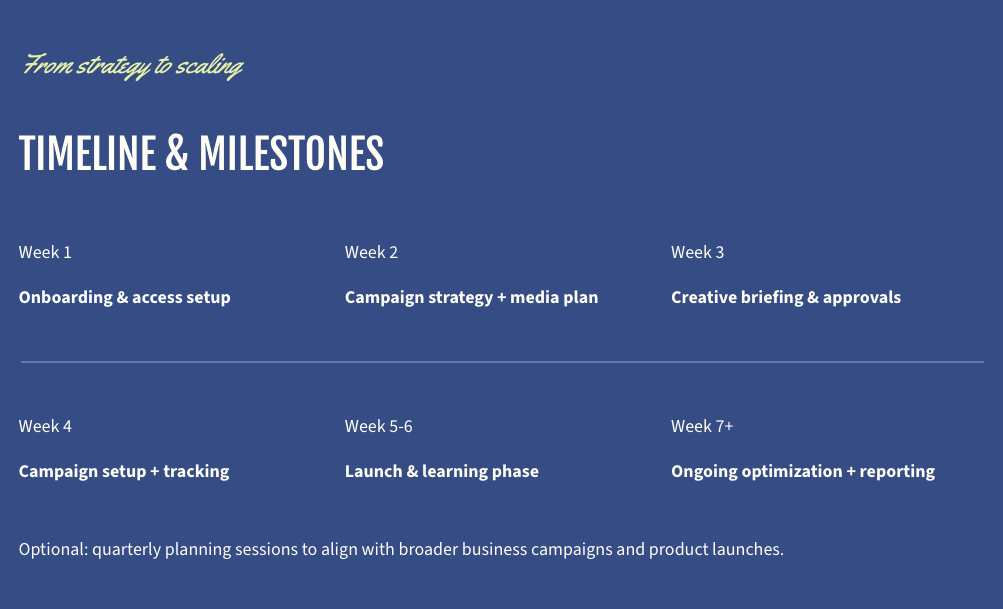
Pre-written service details
The structure makes it easy to present your services in a professional, client-friendly format. Instead of a text-heavy document, you can guide prospects through each offering, showing how your expertise translates into measurable business impact.
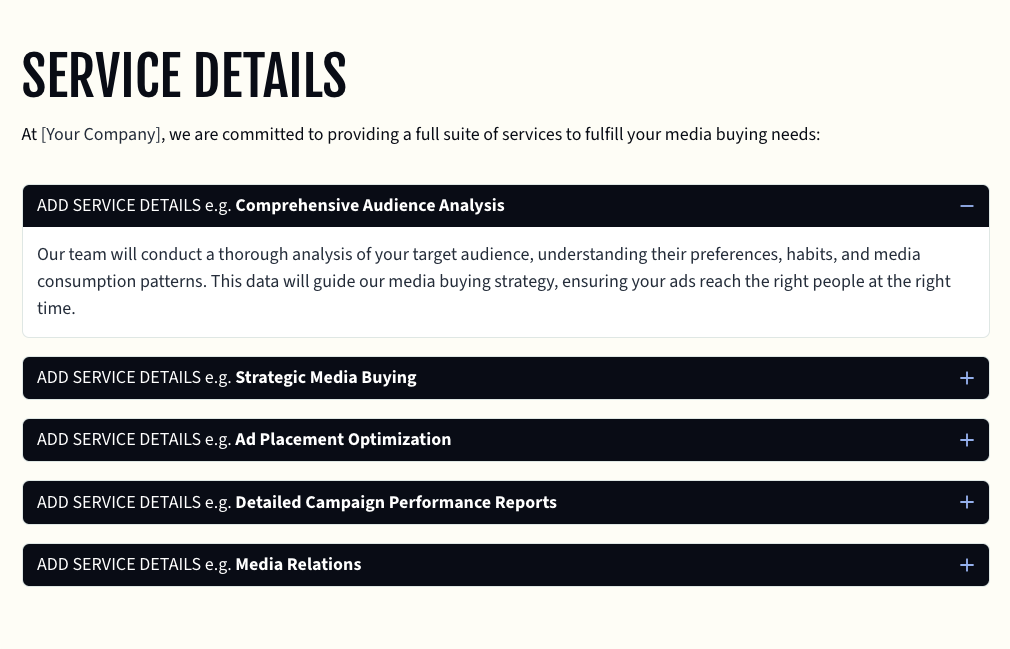
Interactive quote
Budgeting for media buying can feel complex, but Qwilr’s interactive pricing tables make it simple. Within the media buying proposal template, you can create flexible packages or line-item services that let clients compare options and choose what best fits their budget. By making pricing interactive, you give clients control while still showcasing the full value of your services.
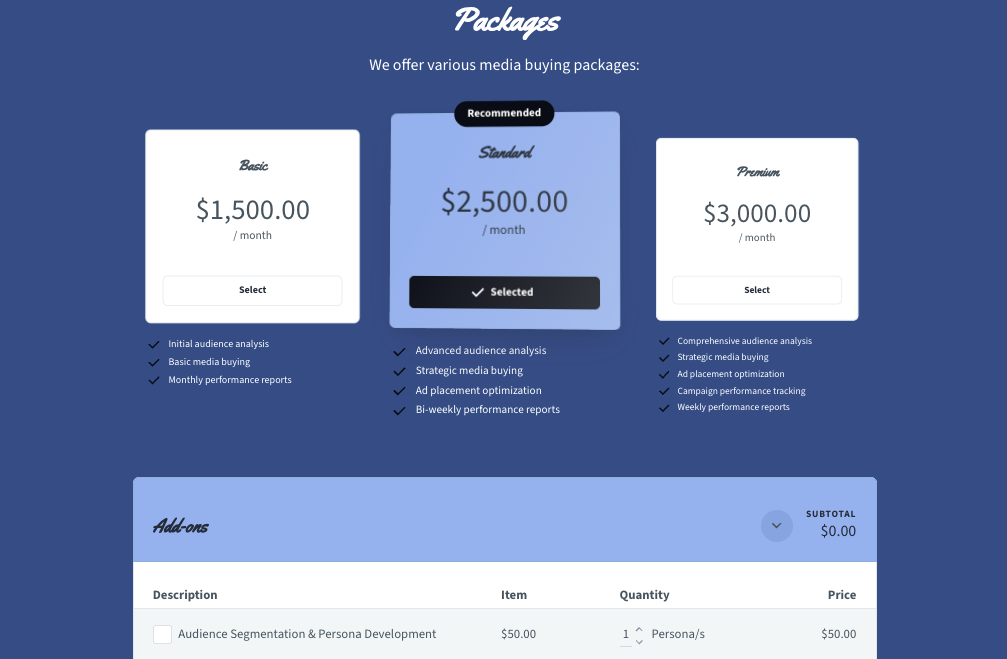
Plain-text agreement and accept block
Once clients are ready to move forward, Qwilr makes it seamless to finalize the contract. The media buying proposal template includes a formal agreement paired with an accept block and e-signature functionality. Clients can review, sign, and confirm your services instantly—no more printing, scanning, or waiting days for signatures.
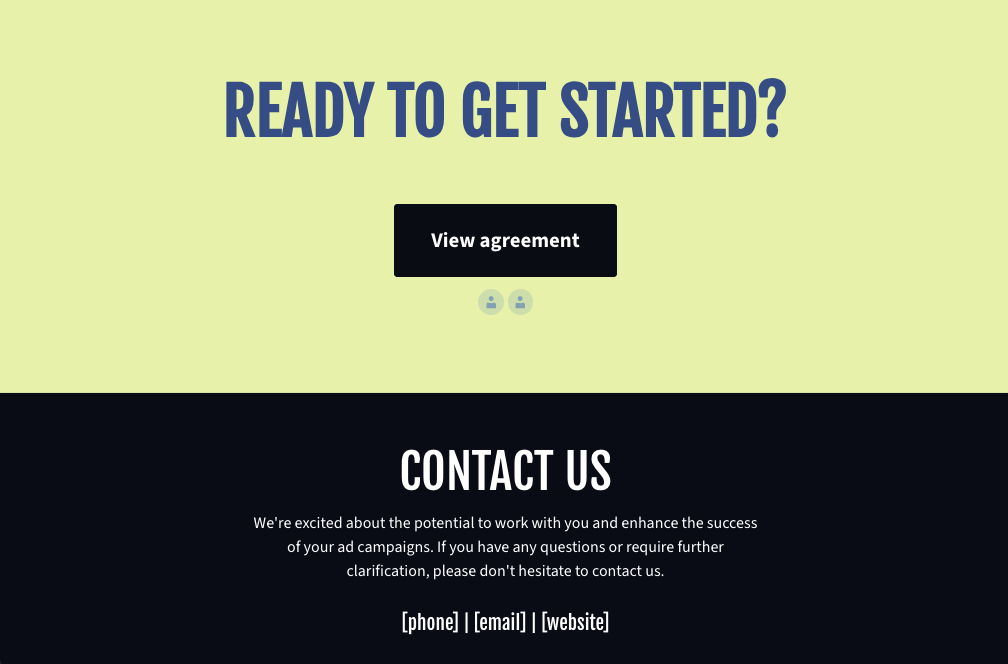
Why Qwilr?
Design interactive proposals
Impress buyers with interactive proposals that stand out. Qwilr’s drag-and-drop editor makes it easy to create on-brand, stunning collateral — no design skills needed. Add videos, dynamic pricing, and ROI calculators to deliver a unique experience, while automated brand customizations ensure every proposal looks professional.

Built-in e-sign functionality
Combine stunning proposals, plain-text agreements, and secure e-signatures in one tool. Add print-friendly agreements alongside dynamic content and collect legally compliant e-signatures with ease. Track progress, capture multiple signatures, and close deals faster with Qwilr’s integrated e-sign functionality.
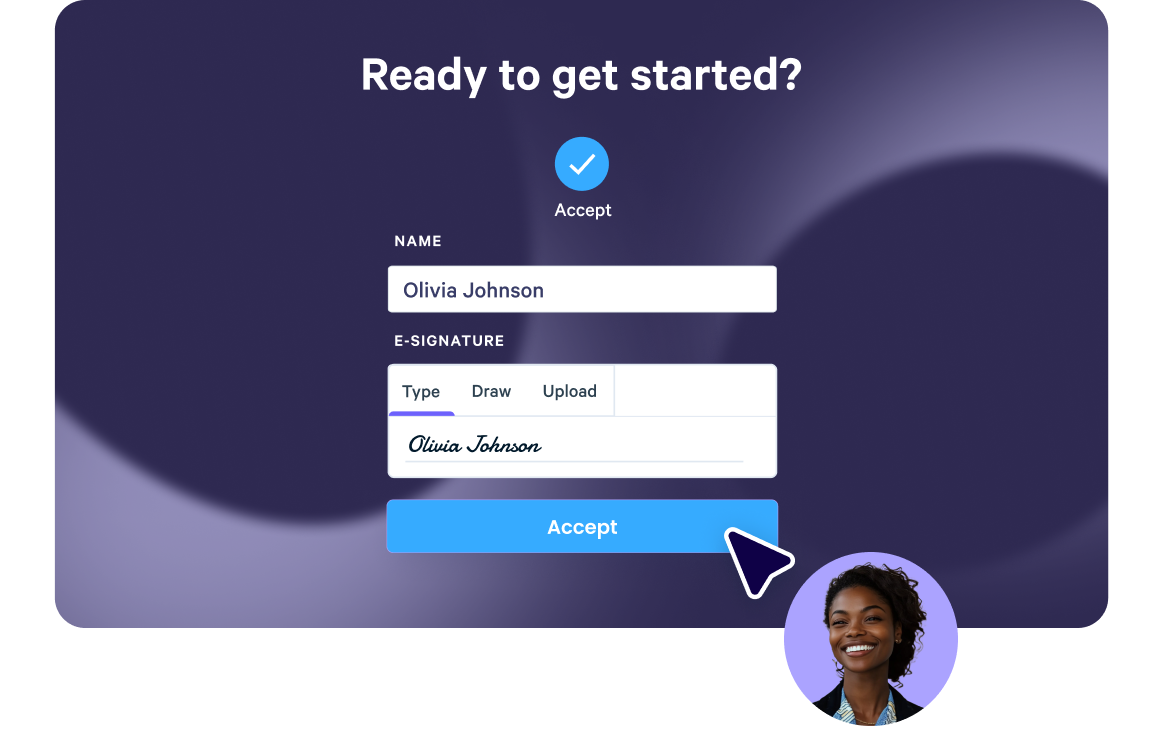
Real-time proposal analytics
Qwilr’s analytics provide full visibility into buyer engagement. Track when proposals are opened, signed, or shared, and get instant notifications for key buyer activities. See what buyers click on, how they engage, and prioritize follow-ups based on real-time insights—all designed to help close deals faster.
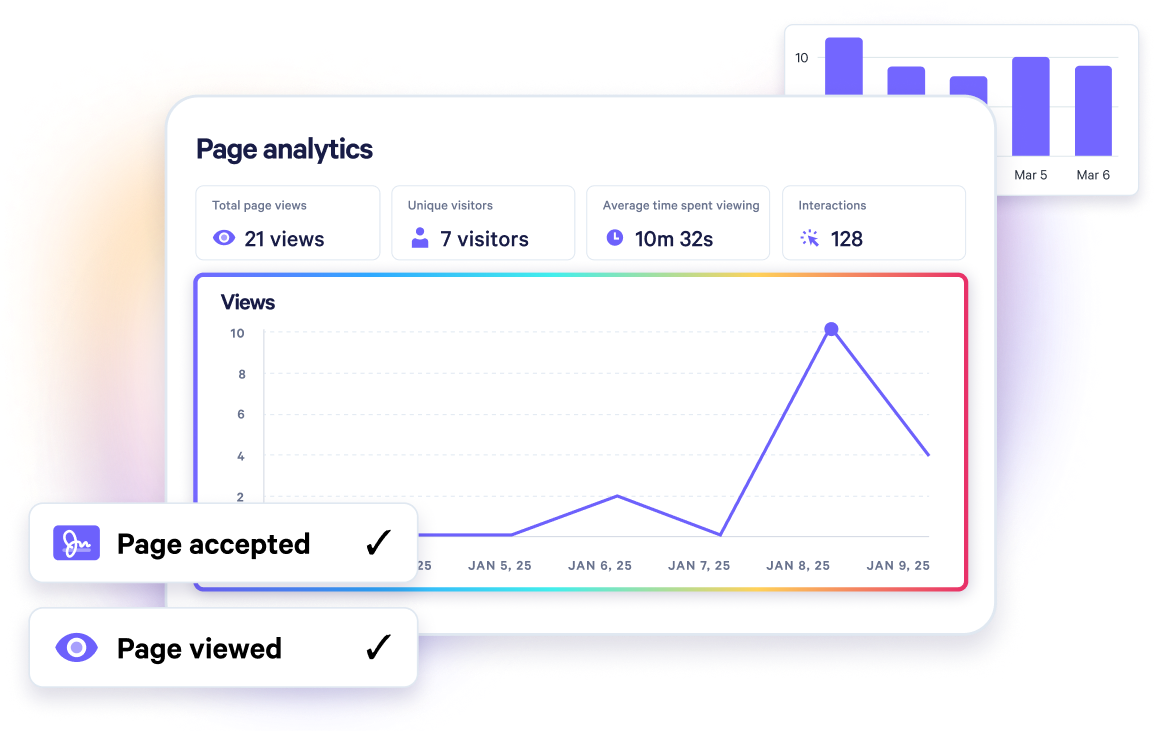
Templates for every use case
Explore templates for sales, marketing, customer success, sales enablement and more.
Explore proposal templatesFrequently asked questions
- Briefly introduce your agency and highlight your expertise in media buying.
- Clearly outline the client's objectives and desired outcomes for the media buying campaign.
- Identify the target audience and provide insights into their demographics, interests, and behaviors.
- Present a comprehensive media strategy that aligns with the client's goals and target audience.
- Break down the proposed budget and explain how it will be allocated across different media channels.
- Detail the specific media channels that will be utilized, including digital, print, TV, radio, etc.
- Explain how the success of the campaign will be measured and provide a plan for regular reporting.
- Provide a timeline for the media buying campaign, including key milestones and deliverables.
- Clearly state the pricing structure and any terms or conditions associated with the proposal.
- Summarize the proposal and reiterate the benefits of choosing your agency for their media buying needs.
- Clearly outline the client's objectives and target audience.
- Provide a detailed media plan with specific channels and tactics.
- Include a budget breakdown and ROI projections.
- Showcase your expertise by highlighting successful past campaigns.
- Use visual elements to enhance readability and engagement.
- Tailor the proposal to the client's industry and unique needs.
- Emphasize how your agency stands out from competitors.
- Demonstrate your ability to adapt to evolving market trends.
- Keep the proposal concise and easy to understand.
- Ensure the proposal reflects your professionalism and attention to detail.
- Identify your target audience and their specific business needs.
- Research and analyze the media landscape to understand the best channels for reaching your audience.
- Develop a compelling media buying strategy that aligns with your audience's preferences and behaviors.
- Create a comprehensive media plan that outlines your proposed budget, target demographics, and desired outcomes.
- Craft a persuasive pitch presentation that highlights your agency's expertise and showcases how your media buying strategy will drive results.
- Clearly communicate the unique value proposition of your media buying approach and how it sets you apart from competitors.
- Emphasize your ability to adapt and optimize campaigns based on real-time data and insights.
- Demonstrate your track record of success with case studies and testimonials.
- Conclude your pitch by summarizing the key benefits and outcomes your client can expect from partnering with you.


